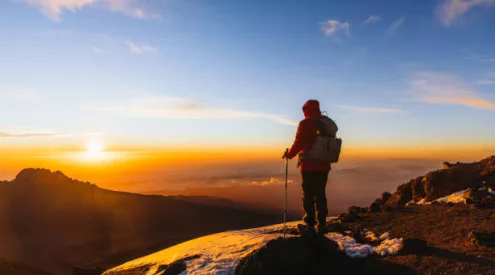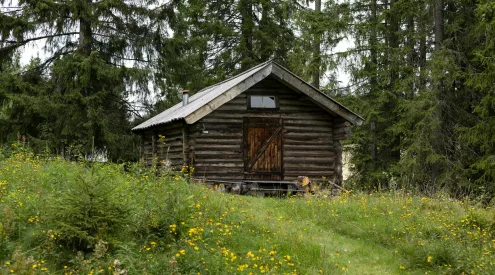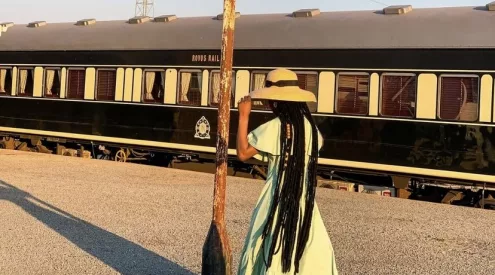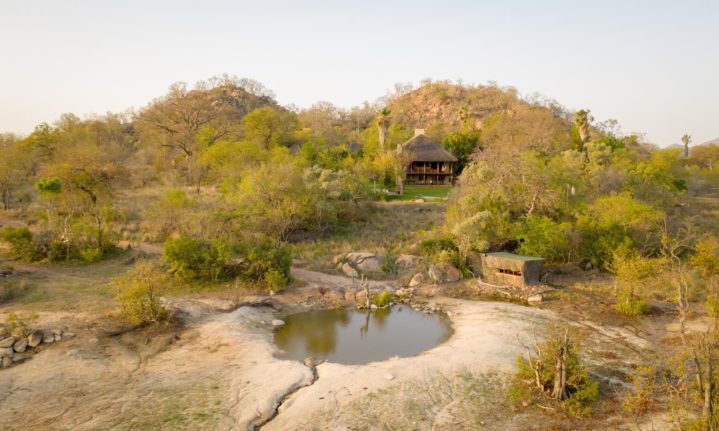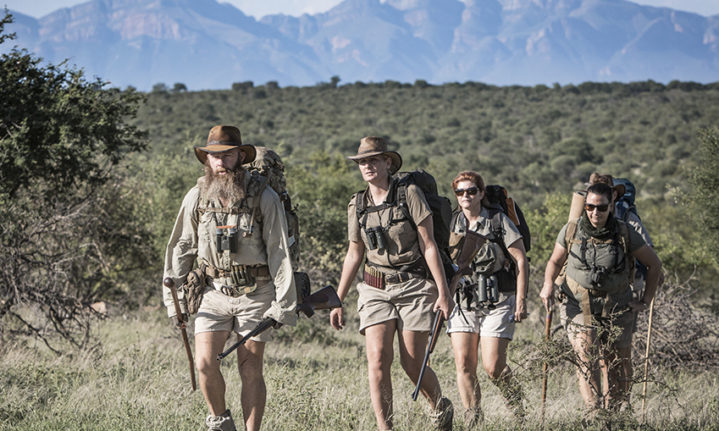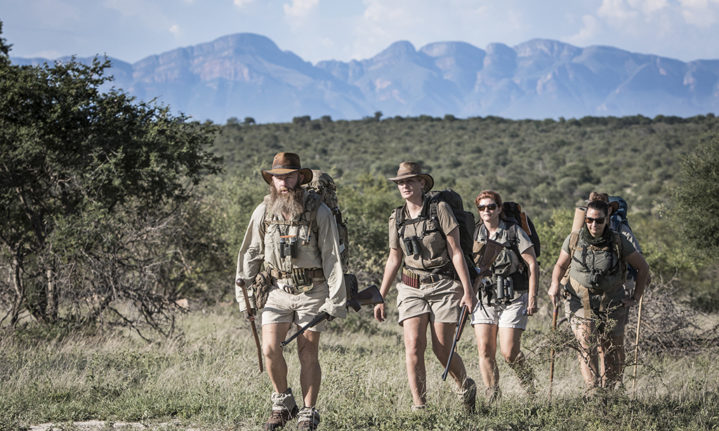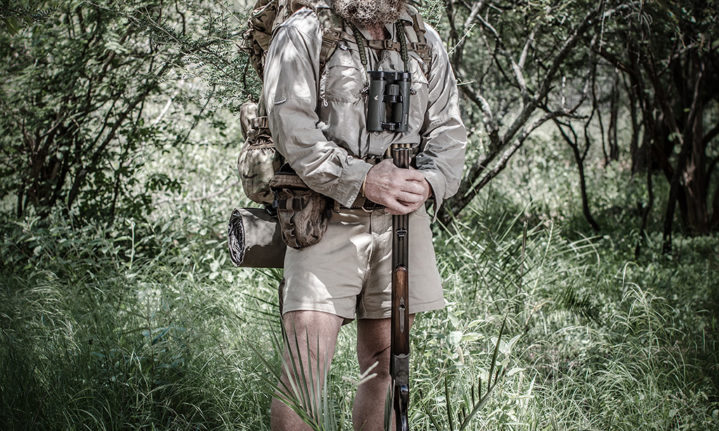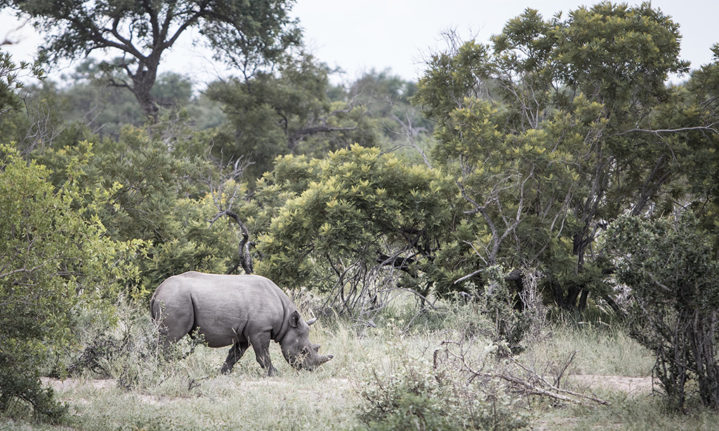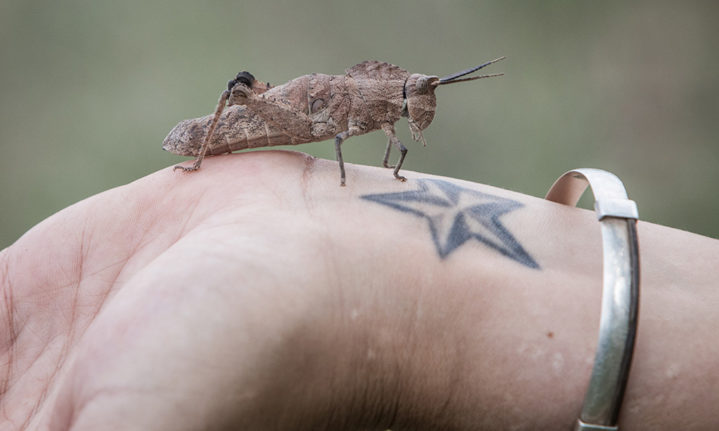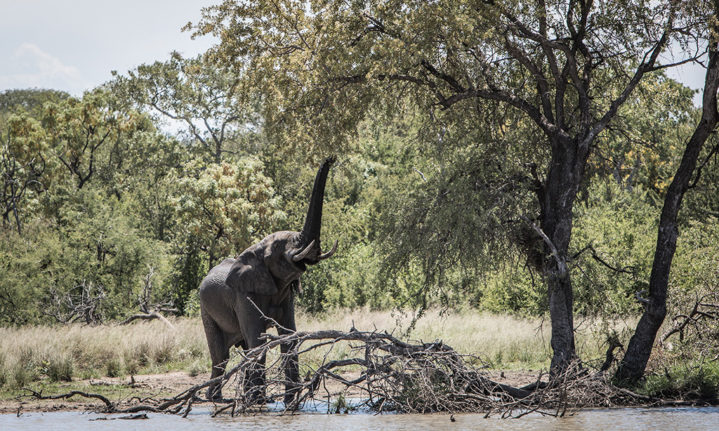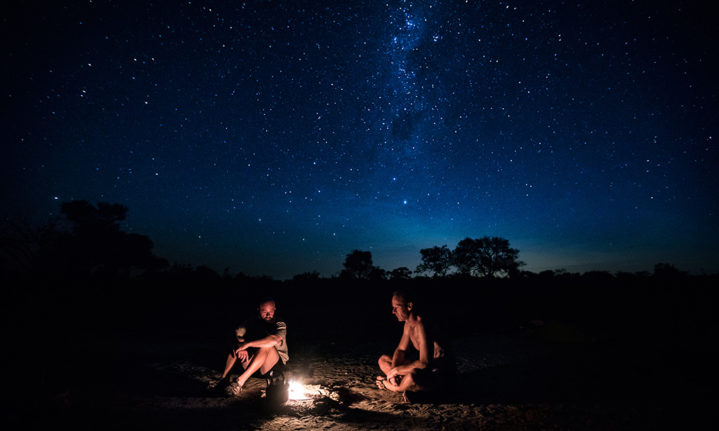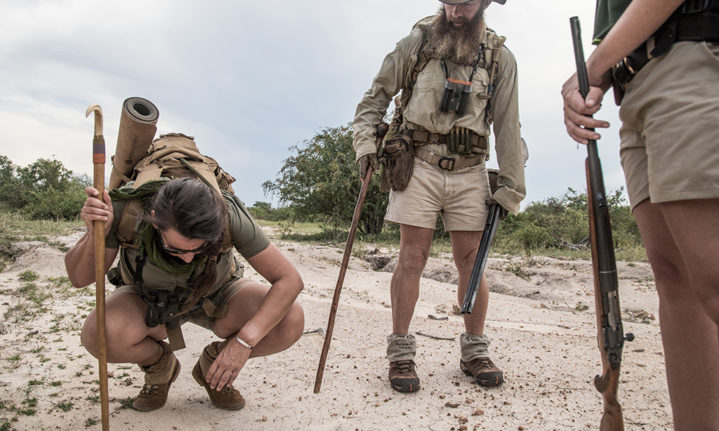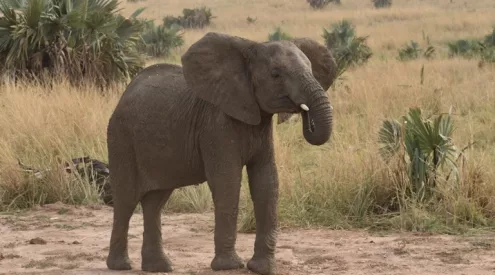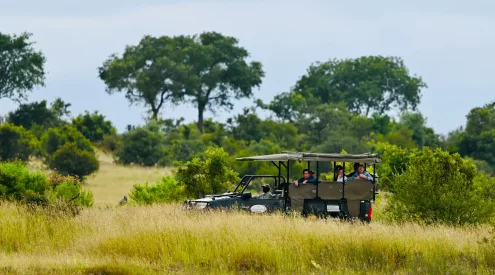Bruce Lawson is one of Southern Africa’s most experienced trail guides, with more than 20 000 hours of walking in Big Five areas. Scott Ramsay got into the flow with him in western Kruger.
Words: Scott Ramsay | Photography: Scott Ramsay
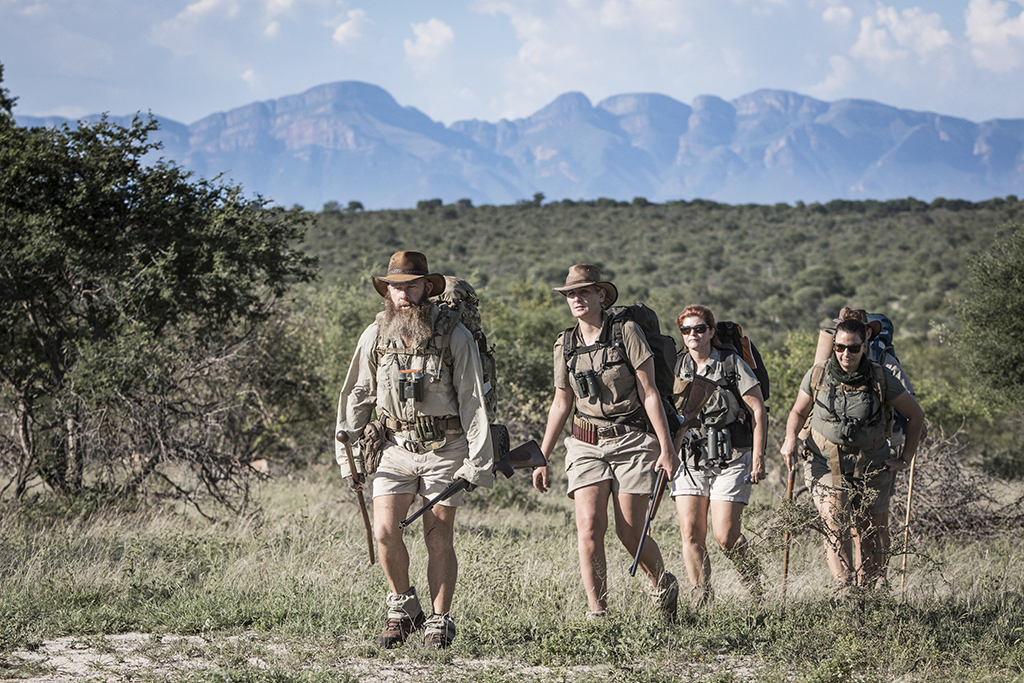
It’s mid-summer in the Lowveld. The marula trees are fruiting, woodland kingfishers are calling and Bruce Lawson is walking.
We’re following Bruce along a game path. My shirt and shorts are drenched with sweat, my eyes are stinging. My pack seems heavier than when I started. As we plod along in the heat, my mind drifts off into daydreams of swimming in the ocean and drinking cold beers.
Bruce stops. We look up. Black rhino. How far? 40 metres? Seems closer. What now? Bruce and his backup guide Megan Smith motion for us to backtrack. ‘Go, go, go!’ Bruce whispers to us.
Energy pumps through my legs. My pack suddenly feels really light. Bruce leads us behind a termite mound, downwind, so our scent is carried away on the breeze. My heart rate slows and for 20 minutes we sit quietly, watching the rhino, which is oblivious to our presence.

Bruce Lawson is a former Captain Morgan Adventurer of the Year for his mad walking exploits.
Like disciples in hypnotic awe of an ancient god, we can’t take our eyes – or thoughts – off the animal. In that time, there was just a rhino, some very sweaty humans, earth and sky.
‘That feeling of being immersed in the moment, that’s what it’s all about,’ Bruce said that evening as we sat at the campfire and watched Jupiter and Saturn in a flaming western sky.
‘The more time you spend on trail in a place like this, the more that happens. You become more and more aware. That’s when you start discovering things about yourself.’
Bruce considers walking in the wilderness his personal recipe for happiness, an effective detox for the anxiety and stress of living in a hyper- technological, over-consumptive world.
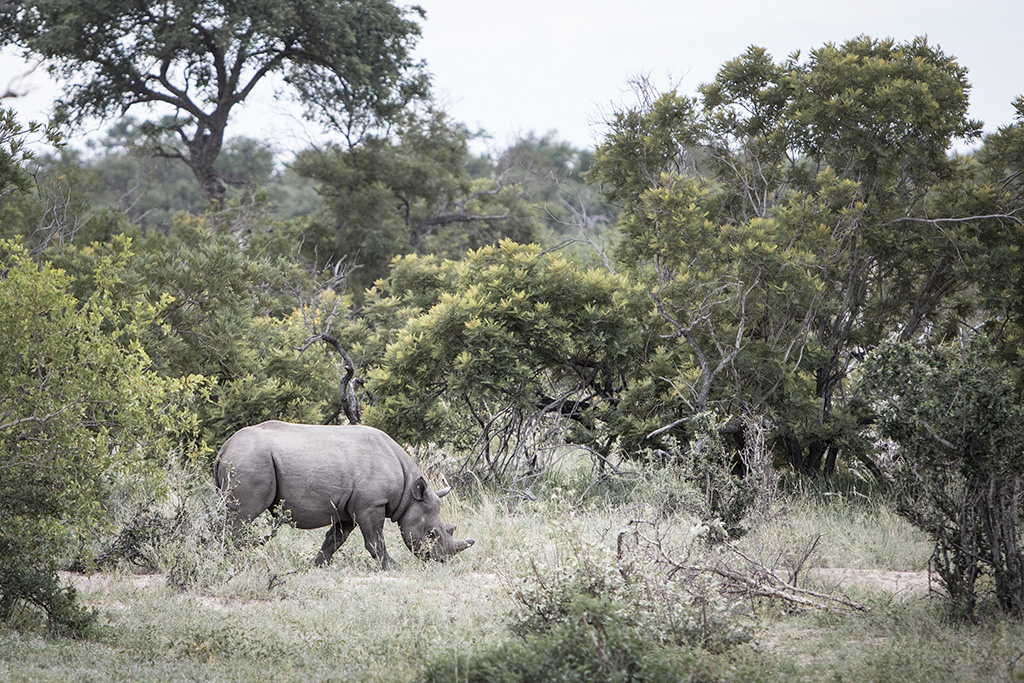
An ancient encounter in a modern world – a black rhino on foot.
‘Priorities on the trail are very simple. Carry only what you need, put one foot in front of the other, use your five senses, respect nature and leave no impact. By the end, you’ve learnt that you don’t need much to be happy,’ he says.
On his multi-day hikes in the Kruger area, trailists leave their watches and phones behind and carry everything in their backpacks. They sleep on the ground under the stars around a small fire, taking turns to keep watch through the night. During the dry winters, Bruce teaches trailists how to dig for fresh, clean water in dry riverbeds, following the example of elephants.
The 51-year-old South African with a lion-mane for a beard knows a thing or two about wilderness, wild animals – and walking. In 28 years so far he has spent.
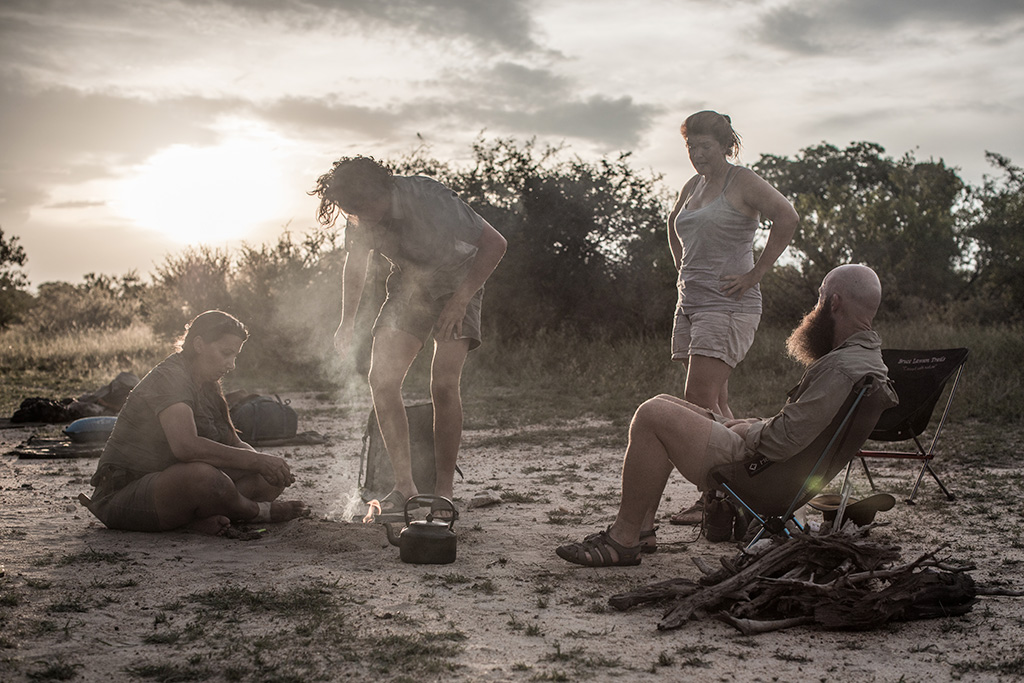
Locust and human; different but connected.
More than 20 000 hours guiding trails in big game areas, which is the most amount of time logged by any guide in Southern Africa. That’s almost five years’ worth of walking in the bush.
In that time he’s covered a total of more than 40 000km, the same distance as Earth’s circumference.
As a Field Guides Association of Southern Africa (FGASA) assessor and long-time instructor of student guides, Bruce has taught and mentored more than 4 000 trainees. Along the way he has logged around 4 600 encounters on foot with elephant, buffalo, lion, leopard and rhino.
‘In all that time I’ve unfortunately had to shoot two animals,’ Bruce said, speaking of separate occasions when elephant cows charged him and his students. ‘Both were very traumatic. Elephants are my favourite animals, but I had no other options in those two instances.’
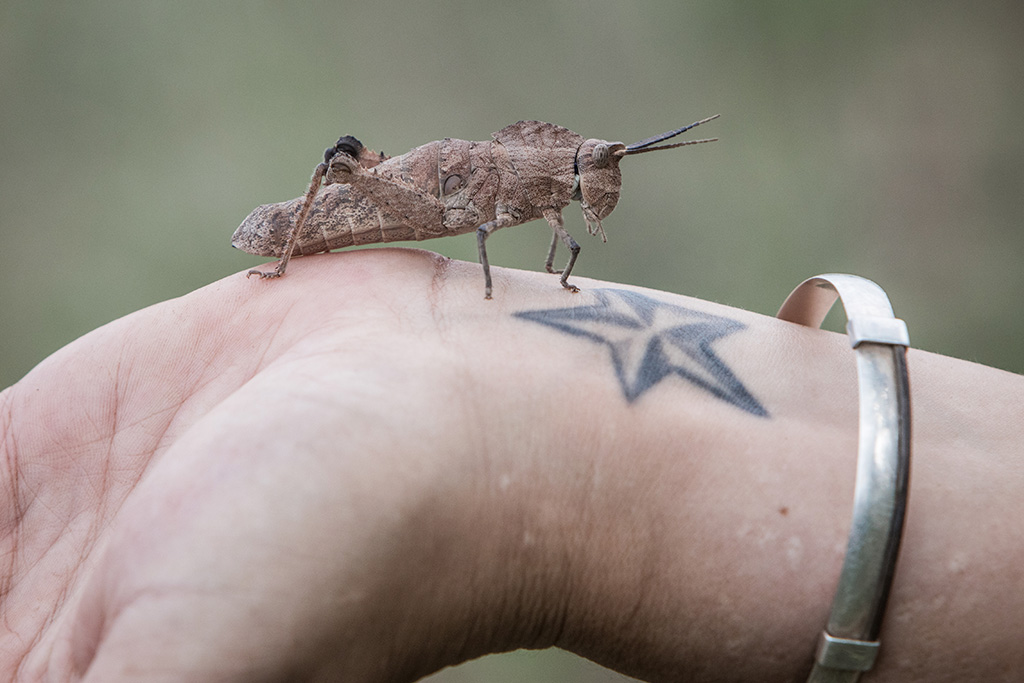
Locust and human; different but connected.
Bruce’s love – perhaps obsession – of walking had its origins in another traumatic event when he was a young boy. Aged three, Bruce almost died in a car accident. When he woke from a coma after 10 days, doctors said he would probably never walk again. His pelvis had been crushed when the vehicle rolled onto him.
For two years, Bruce’s legs were in plaster, from hip to ankle. Then he was confined to a wheelchair and crutches for four years. But Bruce proved the doctors wrong. His legs slowly healed and six years after the accident, the young boy had taught himself how to walk again.
Since then, Bruce has hardly stopped.
In his late 20s he spent 22 months walking from Cape Town to Cairo with two friends. He broke his ankle, suffered countless septic blisters, ended up in hospital after a spider bite, was attacked by Somali bandits in northern Kenya, and walked through north Africa when the Americans were bombing Khartoum in Sudan.
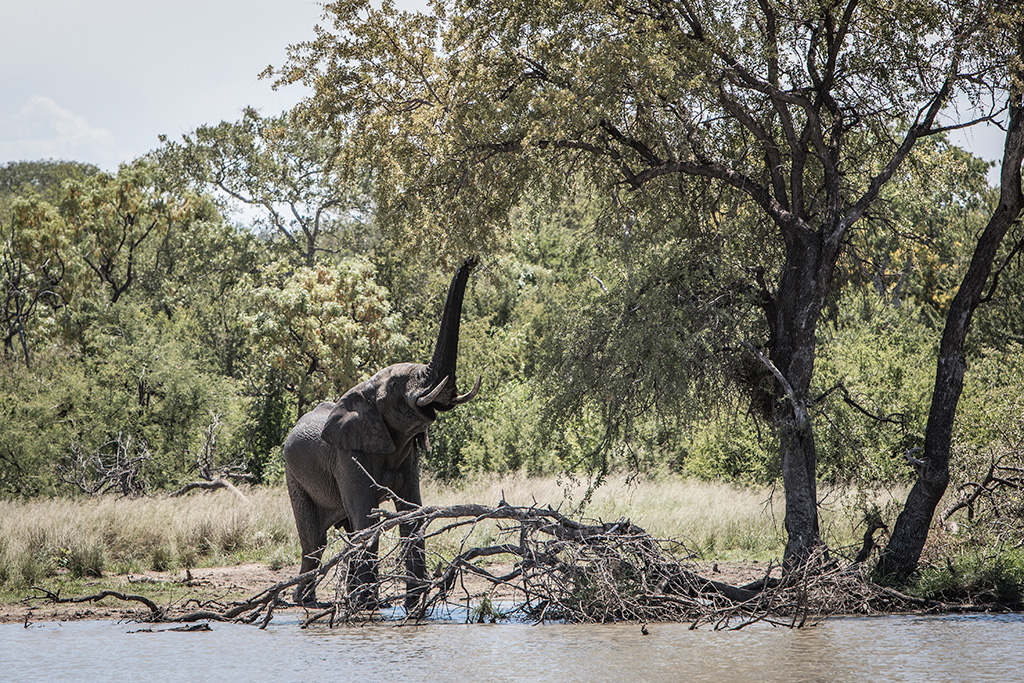
In the Lowveld heat, both us trailists and this elephant slaked our thirst with Earth’s fresh water.
Despite the challenges, Bruce was as happy as ever. ‘It changed me as a person. I became so used to a simple life. All I had to do was walk north, and survive the day. At times it was tough but strangely it was so rewarding.’
Straight afterwards, he walked the length of South Africa (a second time). He’s also trekked 1 200km across South Australia with his wife Dee. During the Covid lockdown he walked 1 000km in 20 days (carrying an 18kg backpack) in his bushveld neighbourhood of Hoedspruit, to raise money for charity.
But he’s simply doing something our homo ancestors have done for the past two million years: walking upright on two legs.
‘For most of history we’ve been living close to nature, walking across the land, without too much worry of the past or future,’ Bruce said, stirring his coffee next to the campfire. ‘It’s only in the last few hundred years that we’ve moved away from that.’
Most of those who come on his trails are city dwellers. ‘People are desperate to connect with nature again, and with themselves, especially after long periods of Covid lockdown. To walk in wilderness for a few days and be fully present, without any distractions. I can help give that to them.’
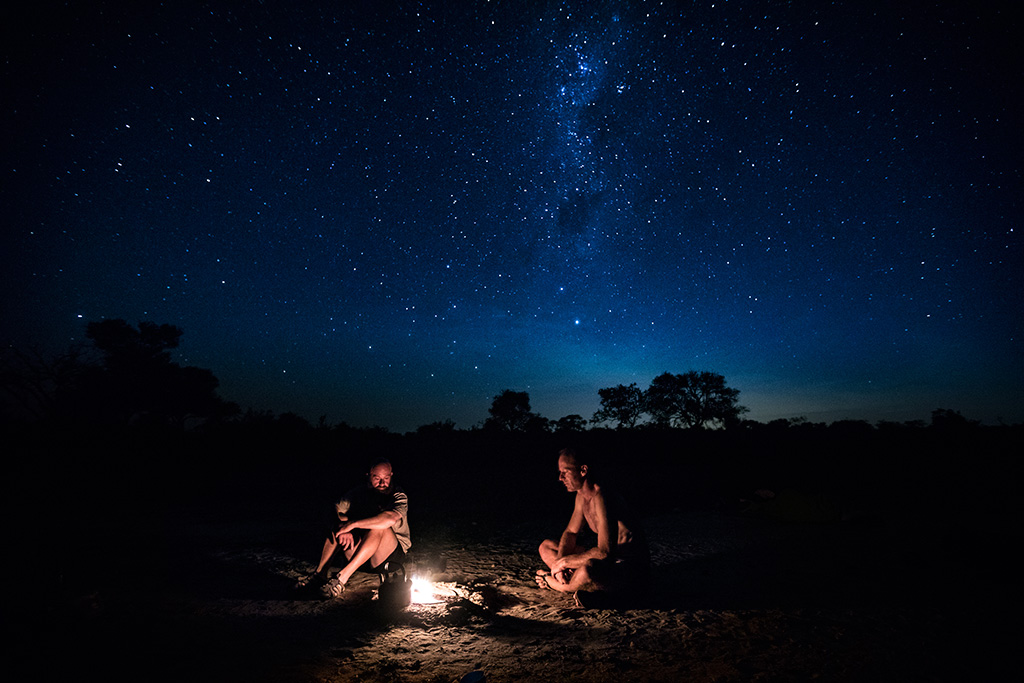
As poet Mary Oliver asks: ‘What is it you plan to do with your one wild and precious life?’
Bruce emphasises minimal environmental impact. Only very small campfires are allowed, made with small sticks of dead hardwood like combretum (which has no insects in it – softer wood houses termites and beetles).
‘A small fire means people sit closer, so we can talk softly,’ Bruce explained. ‘Respect the wilderness. How would you like it if someone walked into your backyard, made a big bonfire and talked loudly?’
Bruce showed us how to build up the fire using river sand, protecting the soil underneath.
‘If you burn two pieces of wood as thick as your wrist, it will kill everything in the soil to a depth of 10cm.’
And Bruce’s rule for waste is simple. ‘One medium reusable ziplock bag should be all you need for carrying out your rubbish.’
‘People on trail soon realise how big an impact they have on the Earth, and how materialistic the modern world is.’
He recommends longer trails, for getting fully immersed into ‘the wilderness way’.
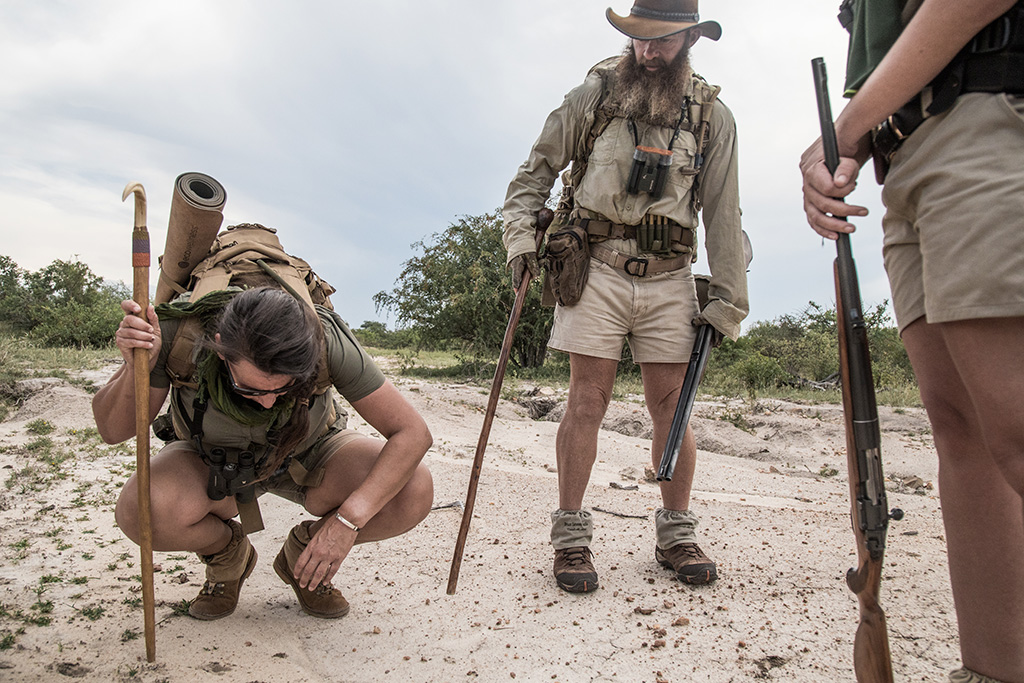
‘On the first day, francolins freak out when you walk past them, because you’ve got a big wall of anxious energy around you. Animals can easily sense that. After a few days everyone is calmer and that wall breaks down. You become a human animal again, part of nature,’ he says. ‘The animals then start saying, “Welcome, good to have you here”. On day four, you can walk right past francolins and they’ll be chilled.’
Sure enough, in the following days we slip into the flow. We watch an elephant bull drinking slowly from a waterhole nearby. Five white rhinos are snoozing in the mud. Later we almost bump into another black rhino but we backtrack calmly without fuss.
Small things loom large, too. Matabele ants on the march. The backlit grass in the breeze. Aromas of sage and foxglove. Sabota larks and Diederik cuckoos spinning tunes on Bushveld FM.
And those woodland kingfishers with their bamboozling turquoise feathers. Everything seems brighter, clearer, more alive… or do I just feel more alive?
On our last night, Megan wakes me for my night watch shift. She’s just seen two lionesses walk past camp, before moving on. I get up a bit groggily and move to the fire to keep watch. Stars are blazing overhead. Sitting at the fire, I realise how calm I feel.
‘Hold on,’ I think to myself. ‘Lions have just walked past camp, and I’m feeling completely calm?’ How does that work?
‘Ja, that’s what happens’, says Bruce. ‘The lions could sense you’re relaxed and confident. So they’ll keep their distance and also be relaxed. By the end of the trail, you’ve become part of nature.’
Bruce suggests that we walk the last day in silence until we finish the trail. We set off, back to base. Along the way, the group seems to move as one, and somehow we communicate – but not with words. We’re fully in the flow.
As we approach the end, Bruce takes his walking stick, and starts writing something in the sand.
‘What is the date? The date is today.’ A few steps further…
‘What is the time? The time is now.’ Finally, he draws a line, and writes: ‘ Be here, now.’
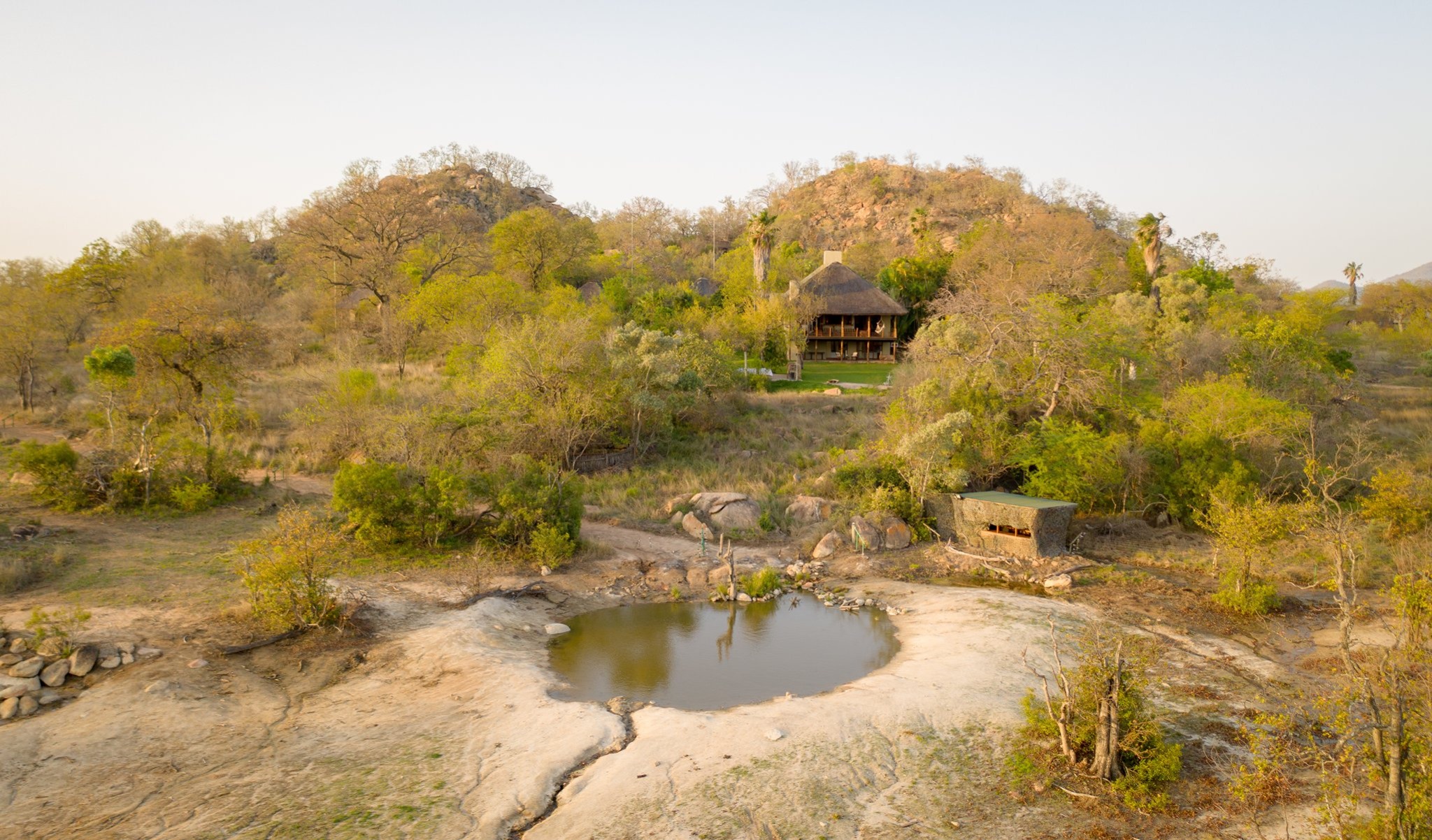
Picture: Selati Game Reserve
Do It
Bruce Lawson runs multi-day wilderness trails in Balule and Selati Game Reserves in the western Kruger area, and in the Makuleke Concession in northern Kruger. Trailists need to bring their own backpacks, food, cooking utensils, small gas stove, sleeping bag and roll-up mattress.
Cost:
Three-nights from R4 500 to R6 000, four nights from
R5 000 to R7 000, and five
nights from R7 000 to R10 000,
depending on the area.
Contact:
Bruce Lawson,
WhatsApp 082 332 5692,
or Dee Lawson, WhatsApp
063 100 0448.

